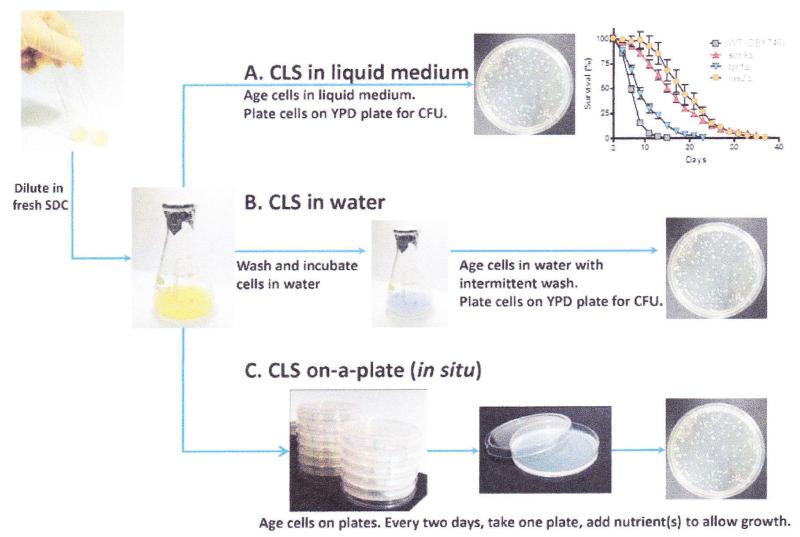Fig. 1.
Yeast chronological lifespan (CLS) analyses, lnoculate freshly streaked colony into 1 mL SDC medium and let grow overnight. (a) For a typical liquid SDC CLS analysis, the overnight cultures are diluted (1:100) in to fresh SDC medium to a final volume of 10 mL (with flask to culture volume of (5;1). This time point is considered day 0. Every 2 days, aliquots from the culture are properly diluted and plated onto YPD plates for Colony Forming Units (CFUs) evaluation. Viability at day 3, when the yeast had reached the stationary phase, is considered to be the initial survival (100%). Representative results of chronological survival of the wild-type (DBY746), sch9Δ, torlΔ, and ras2Δ are shown (replotted from Wei (1)). (b) For extreme CR/starvation, cells from 3-day-old SDC culture are washed three times with sterile water and resuspended in water. Every 2–4 days, cells from the water cultures are washed to remove nutrients released from dead cells. (c) Chronological survival on solid medium. Day 1 SDC cultures are diluted and plated onto agar plates (extreme calorie restriction) or tryptophan dropout (SC-TRP) plates. Plates are incubated at 30°C for the duration of the assay. Every 2 days, one plate from each set is retrieved and appropriate nutrients are added to allow growth.

